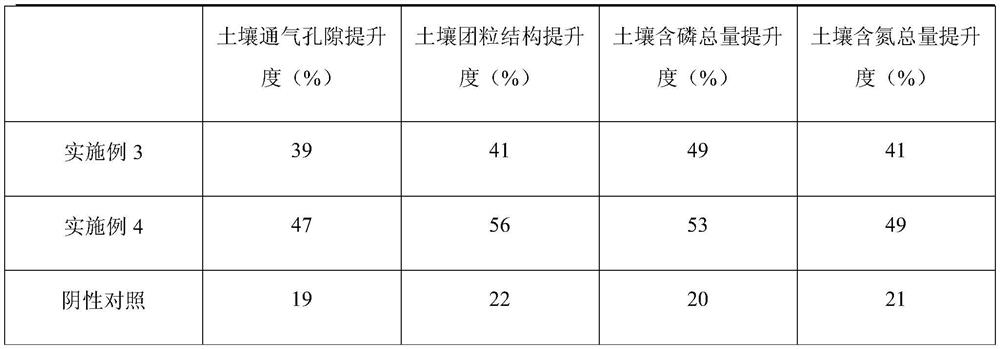A method for preparing self-slow-release seaweed fertilizer capable of degrading organic pollutants
A technology of organic pollutants and seaweed fertilizer, which is applied to the treatment of organic fertilizers, inorganic fertilizers, and bio-organic parts, and can solve problems such as high cost, large waste of fertilizer raw materials, and inability to achieve quick and long-term crop nutrient needs.
- Summary
- Abstract
- Description
- Claims
- Application Information
AI Technical Summary
Problems solved by technology
Method used
Image
Examples
Embodiment 1
[0031] Example 1 Preparation of self-slow-release seaweed fertilizer capable of degrading organic pollutants
[0032] Specifically, the following steps are included:
[0033] (1) Raw material pretreatment: soak 100 kg of seaweed in water and wash it several times;
[0034] (2) Adjust the water content of the seaweed raw material after pretreatment to 40-50%, add acetic acid to adjust the pH to 4-7, add 3% cellulase, 1% pectinase, 2% non-algae according to the amount of enzyme / algae mass ratio Amylopolysaccharase, 1% papain, 1% helicase and temperature control 25 ~ 45 ℃ use multi-stage series enzymatic hydrolysis for 10 ~ 24h, the level of multi-stage series enzymatic hydrolysis is set to 6 levels, the temperature range of each level of enzymatic hydrolysis It is controlled between 25-45°C, the pH is controlled between 4-7, and the temperature gradually increases from the first level to the next level, while the pH value gradually decreases. After enzymatic hydrolysis, centri...
Embodiment 2
[0040] Example 2 Verification of water retention effect of self-slow-release seaweed fertilizer capable of degrading organic pollutants
[0041] Get example 1 self slow-release saline-alkali soil improvement seaweed fertilizer, measure its impact on soil water retention. The soil without fertilizer particles has a water retention rate of about 28%, and after drying for 15 days in the natural state, almost loses all water; while the soil with 5%, 10% and 15% fertilizer particles, respectively, has a water retention rate of 39%. %, 68% and 77%, after drying for 15 days in the natural state, the water retention rate is still 29%, 52% and 61%. It can be seen that the self-slow-release seaweed fertilizer not only has a good water absorption capacity, but also has a good water retention capacity after being added to the soil. This characteristic of fertilizer granules is mainly due to the self-trehalose and its macromolecular cross-linked products in the seaweed fertilizer, which c...
Embodiment 3
[0042] Example 3 In-situ remediation of self-slow-release seaweed fertilizer capable of degrading organic pollutants
[0043] Thickness is 30 centimeters, area is the treatment area of 100 square meters, spread and spray 30kg of self-slow-release seaweed fertilizer that can degrade organic pollutants evenly in the soil polluted by organic pollutants, plow the soil to make the mixture and the polluted soil Mix well.
[0044] At the same time, add water and carry out plowing and oxygenation of the soil. When performing in-situ bioremediation of the soil, the thickness of the remediation soil should be controlled within 30 cm, and the soil should be plowed once a week on average within one month after inoculation; Then plow once every two weeks, and add water at any time to keep the moisture content of the soil above 30%, and the added water should not contain fungicide ingredients.
[0045] The test results found that: for soil with an oil content of 8% (W / W), after one month...
PUM
 Login to View More
Login to View More Abstract
Description
Claims
Application Information
 Login to View More
Login to View More - R&D
- Intellectual Property
- Life Sciences
- Materials
- Tech Scout
- Unparalleled Data Quality
- Higher Quality Content
- 60% Fewer Hallucinations
Browse by: Latest US Patents, China's latest patents, Technical Efficacy Thesaurus, Application Domain, Technology Topic, Popular Technical Reports.
© 2025 PatSnap. All rights reserved.Legal|Privacy policy|Modern Slavery Act Transparency Statement|Sitemap|About US| Contact US: help@patsnap.com


